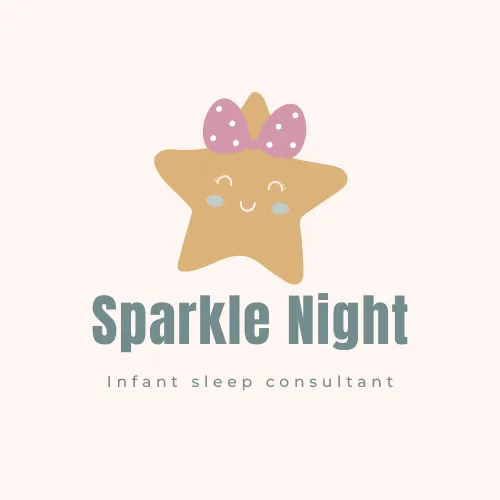
Surviving the 4-Month Sleep Regression
Surviving the 4-Month Sleep Regression: What’s Happening and How to Help Your Baby (and Yourself)

If you’ve landed here with tired eyes, an overtired baby, and a sense of "what on earth is happening to our sleep?" you’re in exactly the right place.
The 4-month sleep regression is one of the most talked-about (and dreaded) stages in infant sleep , and for good reason. It can feel like overnight your baby forgets how to sleep, just when you were getting the hang of things. As a paediatric sleep consultant and a mum of four, I’ve not only supported countless families through it, I’ve lived it. Four babies. Four regressions. Four sets of puffy eyes and endless Google searches at 2am.
But here’s what I want you to know: this is a developmental progression, not a problem, and with the right strategies, you can come through the other side with better, longer sleep than ever before.
What Is the 4-Month Sleep Regression?
The 4-month regression (which can hit anytime between 3–5 months) is caused by a permanent change in your baby’s sleep architecture. Around this time, their brain develops the ability to cycle through lighter and deeper stages of sleep, just like an adult — which means:
They now wake more fully between cycles
They may struggle to connect one sleep cycle to the next (day and night)
Sleep becomes more fragmented
Naps often go haywire
They need more support to get back to sleep
This isn’t a temporary blip like some other regressions. It’s a biological shift. That’s why it’s often referred to as a "regression" when really… it’s a progression. But let’s be honest — it can feel like your baby’s sleep has gone completely backwards.
Signs Your Baby Is in the 4-Month Sleep Regression
Waking every 45 minutes to 2 hours at night
Short naps (30–45 minutes)
Increased fussiness or clinginess
More difficulty falling asleep, especially without help
Seeming ‘wired’ at bedtime despite being tired
If this sounds familiar, know this: you’re not doing anything wrong, and neither is your baby. Their brain is doing exactly what it’s meant to do. But that doesn’t mean you have to just survive it, you can support your baby through it and protect your own sanity.
How to Support Your Baby Through the 4-Month Regression
1. Start Laying the Foundation for Independent Sleep
Now is a powerful window to begin gently guiding your baby towards independent sleep. This doesn't mean leaving them to cry, far from it. But small, consistent shifts now will pay off hugely in the weeks ahead.
As a mum, I know it’s tempting to do whatever works at 2am, but as a sleep consultant, I also know that continuing to bounce/rock/feed back to sleep every 45 minutes can make this regression feel never-ending.
Try this:
Put your baby down drowsy but awake once a day, even if it doesn’t work yet. This helps build familiarity with falling asleep in their sleep space.
Begin a short, predictable bedtime routine to signal sleep is coming.
Choose one or two consistent sleep associations (white noise, sleeping bag) instead of multiple ones that may not be sustainable.
2. Cap Wake Windows to Prevent Overtiredness
An overtired baby is a baby who wakes more — not less.
At 4 months, your baby’s awake windows should be around 1.5–2 hours. If you’re seeing lots of false starts at bedtime or catnapping all day, it might be time to tweak your routine.
I’ve been through this myself — with my fourth baby, Lenny, I realised he was staying awake too long between his final nap and bedtime. Once we shortened that wake window, bedtime meltdowns and night wakings started to improve.
3. Don’t Panic About Feeding at Night — But Don’t Let It Be the Only Tool
Yes, your baby might still need 1–2 night feeds at this age. That’s developmentally normal. But if you’re feeding every single wake-up, it could be masking sleep challenges.
Ask yourself:
Are they actually hungry? Or is this the only way they know how to get back to sleep?
You can start gently separating feeding from falling asleep by feeding at the start of your bedtime routine, not the end. And if they’re waking every hour and taking tiny feeds — it’s likely comfort, not hunger.
How Long Does the 4-Month Sleep Regression Last?
The most intense part usually lasts 2–6 weeks, but this depends on whether your baby is supported through it or stays reliant on being helped back to sleep every cycle.
With a responsive but structured approach, most babies settle into more predictable sleep within a few weeks — and often sleep better than they did before.
What I Wish I Knew the First Time Around
With my first baby, I thought I’d broken something. One week we had 6-hour stretches, the next week we were up every 45 minutes. I doubted myself. I Googled everything. I questioned if something was wrong with me.
By the time my fourth baby hit this regression, I had the tools. And the confidence. And most importantly — the perspective. I knew this was temporary. I knew I didn’t have to power through alone. And that changed everything.
Final Words from a Mum Who’s Lived It and a Consultant Who’s Coached Through It
If you’re in the thick of the 4-month regression right now — please know this:
You’re not failing
Your baby isn’t broken
And sleep doesn’t have to be this hard
With the right support, you can turn this regression into a reset. And I can help you do exactly that.

